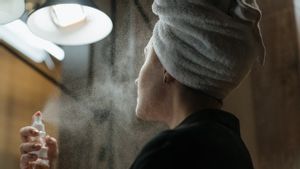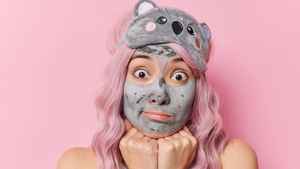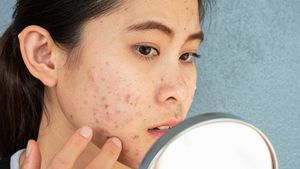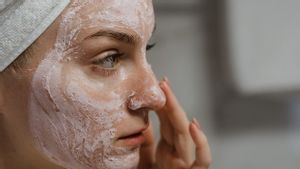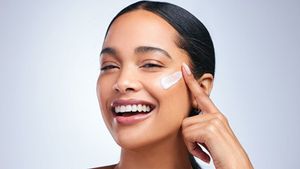YOGYAKARTA Various ways to treat your face, one of which is by exfoliating dead skin cells. This method is useful for restoring a smooth, glowing, and moist skin texture. According to a board-certified dermatologist, exfoliation with chemical content such as glycolic acid can be useful if done properly.
Glycolic acid, or glycolic acid, is an alpha-hydroxy (AHA) acid for chemical care and exfoliation that is beneficial for improving skin color, texture, and flattening skin tone. According to Kristis Echtten, licensed beauty expert reported by Byrdie, Monday, May 8, glycolate acid excels in chemical exfoliation. Omission occurs when the compound interacts with the skin thereby increasing the proliferation of the dermis cell and removing the stratum of the corneum as well as the blockage in the pores.
Glycolate acid has a small molecular structure so that it can be absorbed perfectly in the skin layer. Once at the point to be repaired, acid dissolves excess sebum and dead skin cells so that the skin is finer, brighter, and looks young. Specifically, glycolic acid is beneficial for reducing hyperpigmentation, smoothing skin color, smoothing fine lines and wrinkles, adding light and glow to the skin. In addition, according to Cecilia Wing, a celebrity facialist, exfoliation of glycolic acid stimulates natural collagen production and reduces signs of aging on the skin.
Even glycolic acid is also useful in reducing skin susceptibility to comodos, white comodos, and acne. Good fact about glycolic acid, skincare products with this content are safe to use during pregnancy, explained DendyGGelman, MD., a board-certified dermatologist and dermatologist at the Metropolitan Hospital Center.
Exposure of the skin is only safe to do on a limited basis and monitored by experts. This is done to minimize damage and skin irritation, especially in skincare products containing AHA, BHA, and PHA. Well, if you use glycolate acid treatment, avoid using products with retinol a week earlier.
Treatment with glycolic acid, maybe you can get it at a dermatologist clinic and beauty. But usually the price is more expensive than daily skincare that formulates glycolate acid.
Glycolic acid is an AHA, a group of acid compounds that most often come from plant-based sources. Some of them glycolate comes from sugar cane and lactics that come from acid milk. Zapplen recommends, for good and safe peeling, look for about 5 percent of glycolate acid levels and levels Ph between 3 and 4. When using it, use it slowly and not too much. Start using 2-3 times a week. If the skin becomes dry or irritated, reduce usage.
Zachten's advice again, redness, dryness, and exfoliation are common. Usually after peeling the skin will feel strong and reddening. The level of exfoliation depends on the intensity of exfoliation. If you use a mild exfoliation rate, exfoliation will slowly result in a soft texture of the skin. In contrast to stronger exfoliation, changes may look more dramatic.
اقرأ أيضا:
After treating products containing glycolic acid, avoid using other products containing retinol or vitamin C to avoid skin is more sensitive and very dry. Better, advises Engleman, look for products with ceramide, hyaluronic acid, and peptides to protect the skin. In addition, avoid exposure to the sun's UV. Using skin care with glycolic acid is necessary wisely. Because excess exfoliation can damage the skin barrier and damage the skin.
The English, Chinese, Japanese, Arabic, and French versions are automatically generated by the AI. So there may still be inaccuracies in translating, please always see Indonesian as our main language. (system supported by DigitalSiber.id)



